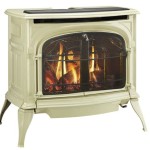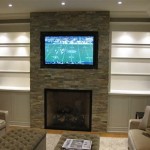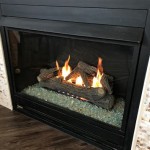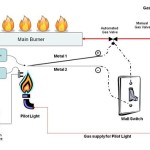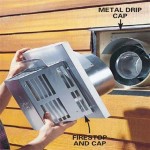```html
Electric Fireplace Energy Efficiency: A Comprehensive Guide
Electric fireplaces have become increasingly popular as a heating solution and aesthetic addition to homes. They offer a visually appealing alternative to traditional fireplaces without the associated complexities of fuel sourcing, chimney maintenance, and potential safety hazards. However, a crucial aspect to consider when evaluating electric fireplaces is their energy efficiency. Understanding how these appliances consume energy and how to optimize their usage is essential for both cost savings and environmental responsibility.
Electric fireplaces operate by converting electrical energy into heat. This process involves passing electricity through a heating element, typically a coil or ceramic plate, which then radiates heat into the surrounding environment. The efficiency of this conversion, and ultimately the fireplace’s energy consumption, is affected by various factors, including the heating element type, the fireplace's design, and user settings.
Unlike gas or wood-burning fireplaces, electric fireplaces do not require venting. This eliminates heat loss through a chimney, making them inherently more efficient in terms of retaining heat within the room. Furthermore, because they operate on electricity, electric fireplaces can be powered by renewable energy sources, like solar or wind power, further reducing their environmental impact.
Understanding Energy Consumption Metrics
To accurately assess the energy efficiency of an electric fireplace, it is important to understand the key metrics that quantify its energy consumption. The wattage rating of an electric fireplace indicates the amount of power it consumes per hour when operating at its maximum heating capacity. A higher wattage rating implies greater power consumption and potentially higher heating output. However, it is crucial to note that the wattage rating does not directly translate to heating efficiency. A fireplace with a lower wattage rating may be more efficient in converting electricity to heat than one with a higher wattage rating.
Electric fireplaces are often rated in British Thermal Units (BTUs). This rating measures the actual heat output of the fireplace. One BTU is the amount of energy needed to raise the temperature of one pound of water by one degree Fahrenheit. A higher BTU rating indicates a greater heating capacity. When comparing electric fireplaces, it’s important to consider both the wattage and BTU ratings to determine the overall efficiency. A fireplace with a high BTU output relative to its wattage is generally considered more energy efficient.
Electric fireplaces often include adjustable thermostat controls allowing users to regulate the temperature output. Using these thermostats effectively is essential for energy conservation. Setting the thermostat to a comfortable temperature rather than maximizing the heat output prevents overconsumption of electricity. Some models also include timers, letting users program the fireplace to operate only when needed, further reducing energy waste.
Factors Influencing Electric Fireplace Efficiency
Several factors influence the real-world energy efficiency of an electric fireplace. The size of the room being heated is a primary consideration. An undersized fireplace will struggle to effectively heat a large room, leading to prolonged operation at maximum wattage and increased energy consumption. Conversely, an oversized fireplace in a small room will cycle on and off frequently, potentially wasting energy.
The insulation of the room also plays a significant role. Poorly insulated rooms lose heat more rapidly, requiring the electric fireplace to work harder to maintain a comfortable temperature. Addressing insulation issues in walls, windows, and doors can significantly improve the overall heating efficiency of the room and reduce the energy demand on the fireplace.
The type of heating element used in the electric fireplace can also impact its efficiency. Some models utilize infrared heating, which directly heats objects and people rather than the air. This can result in a more efficient heating experience, as the heat is not lost to the surrounding air as quickly. Other models use forced-air heating, which circulates heated air throughout the room. The efficiency of forced-air systems depends on the fan's performance and the airflow dynamics within the room.
Strategies for Optimizing Energy Efficiency
Optimizing the energy efficiency of an electric fireplace requires a multi-faceted approach. Selecting the appropriate size and type of fireplace for the room is essential. Consulting a heating professional can provide valuable guidance on determining the optimal fireplace size based on room dimensions and insulation levels.
Utilizing thermostat and timer functions effectively is critical. Setting the thermostat to a comfortable temperature and programming the timer to operate only when needed can significantly reduce energy consumption. Avoid leaving the fireplace running unattended or when the room is unoccupied.
Supplementing the electric fireplace with other energy-saving measures can further enhance overall efficiency. Addressing insulation issues in the room, using energy-efficient lighting, and minimizing drafts can reduce the overall heating load and allow the fireplace to operate more efficiently. Consider using the electric fireplace as a supplemental heat source rather than the primary heating system for the entire home. Zone heating, where only occupied rooms are heated, can be a more energy-efficient approach than heating the entire house to the same temperature.
Regular maintenance of the electric fireplace can also contribute to its efficiency. Cleaning the air vents and heating element can ensure proper airflow and heat transfer. Inspecting the electrical connections and wiring can identify any potential issues that could affect performance and efficiency. Always follow the manufacturer's instructions for maintenance and care.
Ultimately, the energy efficiency of an electric fireplace is a complex interplay of factors related to the appliance itself, the environment it is used in, and how it is operated. By understanding these factors and implementing energy-saving strategies, users can maximize the benefits of electric fireplaces while minimizing their energy consumption and environmental impact.
```
Are Electric Fireplaces Energy Efficient We Love Fire

ᑕ❶ᑐ Energy Efficient Electric Fireplaces For Your Home

Are Electric Fireplaces Energy Efficient Direct Learning Center

Energy Efficiency Benefits Of Purchasing An Electric Fireplace Uintah Fireplaces
How Energy Efficient Is An Electric Fireplace Bespoke Fireplaces

Are Electric Fireplaces Energy Efficient We Love Fire

Are Electric Fireplaces Energy Efficient We Love Fire

Are Electric Fireplaces Energy Efficient

How Energy Efficient Are Electric Fireplaces Rochesterfirst

Are Electric Fireplaces Energy Efficient We Love Fire
Related Posts


